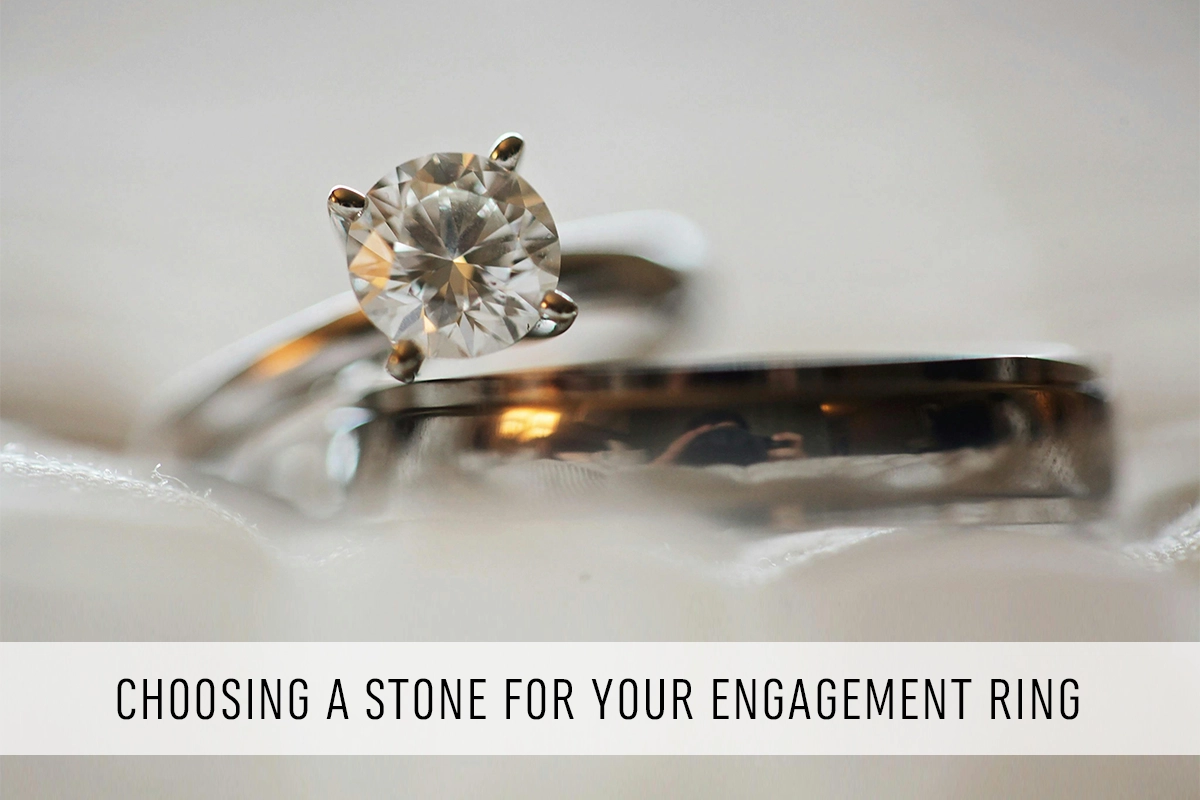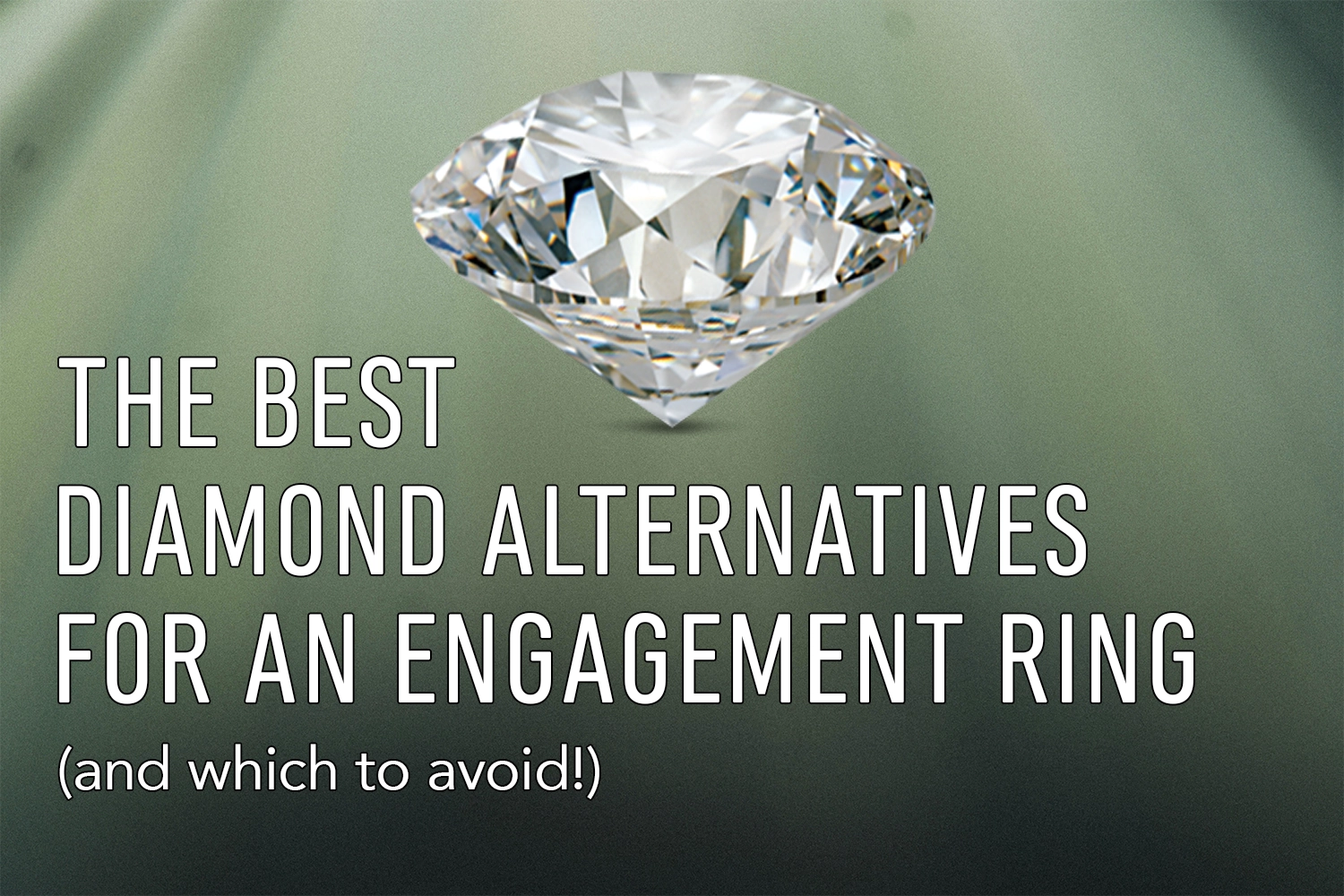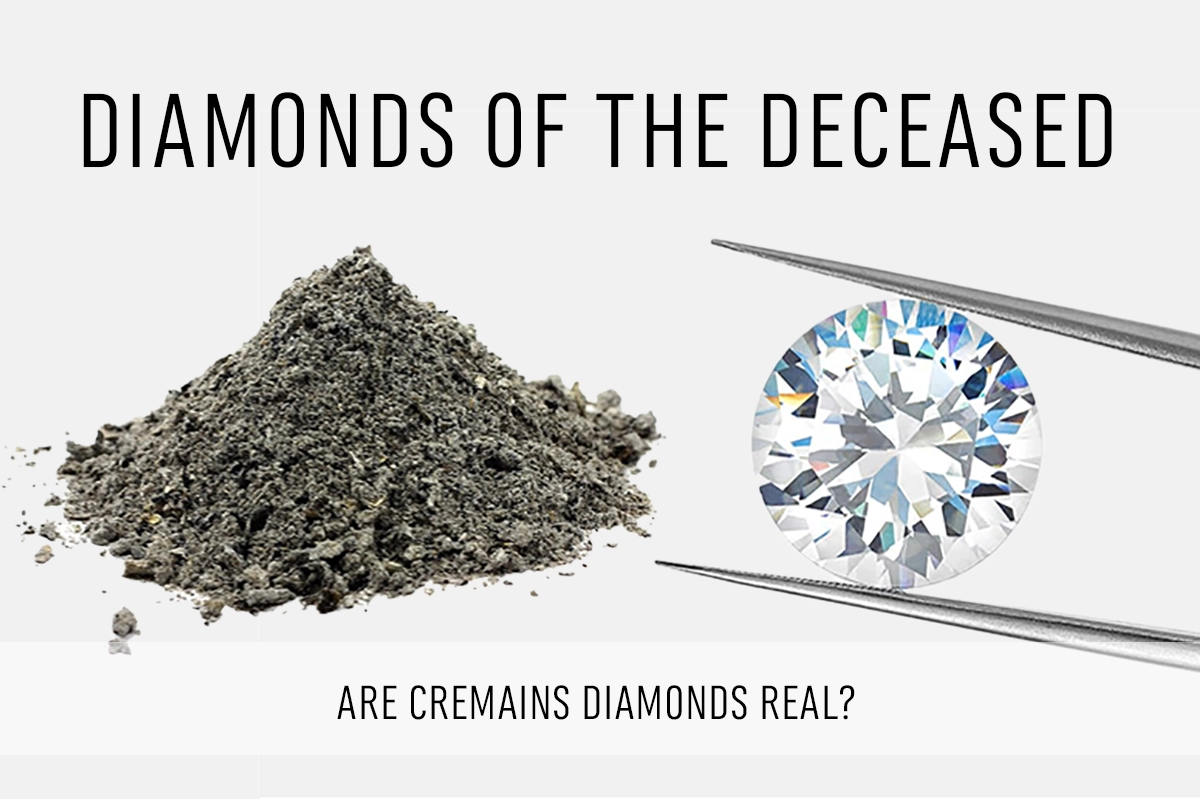
Not sure if you want a diamond engagement ring or something a little different? As alternative engagement rings rise in popularity, you might be feeling overwhelmed by all of the choices.
But there’s no need to stress! This post will walk you through the things you should consider when choosing a stone for your engagement ring so that you can make an informed choice.
Deciding between a diamond or an alternative is not always as straightforward as it may seem. There are quite a few factors you’ll want to take into account before putting your money down. Everyone will have different priorities such as ethics, personal aesthetics, cost, and durability. So, let’s go through them one by one.
Ethics
For many people, diamonds have become synonymous with exploitation and conflict. The diamond industry has a long history of unethical practices, including the use of child labor and the support of warlords and oppressive regimes. Not to mention the price fixing and supply manipulation (I’m looking at you, DeBeers).
Thankfully, there are now many alternatives to “dirty” diamonds that offer ethical and sustainable options for conscientious buyers. Lab-grown diamonds, for example, are chemically identical to natural diamonds but are created in a controlled laboratory environment, without the exploitative practices associated with mining.
There are also diamond suppliers that follow strict guidelines from mine to consumer to ensure that their diamonds are ethical and traceable. Check to see if the dealer is certified by an organization such as the Kimberley Process that ensures that a supplier is free from conflict diamonds. Though these certifications are not foolproof, they can give you a good place to start.
If you work with a reputable jeweler, they can guide you in sourcing an ethical diamond.
When selecting an engagement ring, it’s important to weigh the various ethical considerations against your personal values and priorities. By choosing a diamond alternative or ethical diamond, you can celebrate your love without compromising your principles.
Personal Aesthetics
Aesthetics play a major role in choosing a gemstone for your engagement ring. While traditional diamonds are known for their bright sparkle and unrivaled shine, diamond alternatives have their own unique charm.
Often people think that colourless stones are the only choice for an engagement ring, but, if your partner is up for something a little different, there is an entire rainbow of gemstones to choose from.
If you’re unsure of your partner’s preferences, I suggest talking to them about it. While it may seem a bit strange to discuss the engagement ring before proposing, if couples can discuss other things about their futures and life together, then why not the ring? Jewelry is very personal and you want your partner to have something they’re excited to wear for the rest of their lives.
I guarantee that choosing a stone for your engagement ring will be a lot easier if you have some style guidelines from your partner to work with. And don’t worry, I’m sure they’ll still be surprised by the end result.
Cost
When it comes to purchasing an engagement ring, cost is often a significant factor to consider.
Traditional diamonds can come with a hefty price tag due to their perceived value and demand. In contrast, diamond alternatives are often more affordable, making them an attractive option for those on a budget.
However, it’s important to recognize that the cost of a diamond alternative will depend on the type of stone you select. Lab-created diamonds and moissanite, for example, are known for being more budget-friendly than their natural diamond counterparts, while a natural alexandrite will fetch a higher price than a diamond.
Ultimately, your budget will determine which option is best for you, so it’s essential to consider your finances before making a final decision. Keep in mind that going with a less expensive option does not have to mean sacrificing quality or beauty, in fact, many “non-traditional” stones can be just as beautiful, if not even more stunning, than a diamond.
Durability
Durability is another crucial factor to consider when selecting a stone for your engagement ring. With the huge variety of gemstones in the world, you might think you have hundreds of options. However, for an engagement ring, you want something that will last, so your options will be a bit more limited.
If you don’t want to replace your stone after a few years, it’s best to choose something that will stand up to your lifestyle.
You should always take off your engagement ring when doing anything where it’s likely to get damaged (sports, gardening, swimming, cleaning with chemicals, etc.) but, if you want to be able to wear your ring most of the time, the durability of your stone is important.
While traditional diamonds are known for their hardness, scoring a 10 on the Mohs scale, other diamond alternatives also have impressive durability. Moissanite, for example, has a score of 9.25, making it an excellent option for everyday wear. Corundum gemstones (sapphire and ruby) come in next at a Mohs score of 9.
What is the Mohs Scale?
For those who are unfamiliar, the Mohs scale is a system used to rank minerals based on their hardness and scratch resistance. The scale ranges from 1 to 10, with 10 being the hardest mineral, which is diamond. Some popular diamond alternatives such as moissanite and cubic zirconia have scores of 9.25 and 8.5, respectively, on the Mohs scale.
As a general rule, I don’t recommend stones below a hardness of 8 for an engagement ring. The reason behind this is that quartz, with a Mohs rating of 7, is the most abundant mineral on earth – so abundant that it can be found in household dust. Meaning that any stone of the same or lower hardness can be scratched and scuffed by something as unavoidable as dust.
However, it’s important to keep in mind that the Mohs scale only measures a mineral’s resistance to surface scratching and does not account for other factors such as brittleness or porosity. For example, moissanite is slightly more brittle than diamonds and may chip or scratch if subjected to extreme pressure. Cubic Zirconia is porous and will become cloudy and lustreless within a few years of wear.
It’s essential to learn the specific qualities of whatever gemstone you choose in order to take proper care of your engagement ring. The level of maintenance required may well be the deciding factor in your choice of stone.
Further Reading

The Best Diamond Alternatives for an Engagement Ring (and Which to Avoid!)
Choosing the perfect engagement ring can be a daunting task, especially when considering the seemingly endless range of options available. Read on for my comprehensive list of the best diamond alternatives and which stones to avoid.




